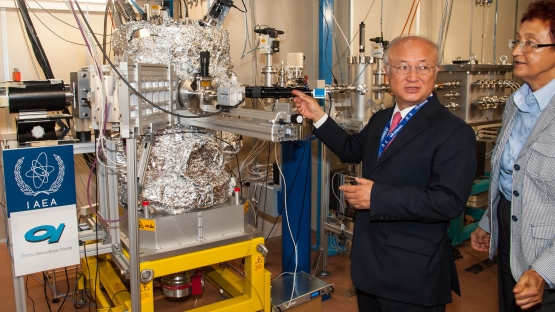The intense beam of X-rays created by a particle accelerator known as a synchrotron is crucial for certain types of research, but with demand for research use exceeding supply, it is hard to access for many scientists. A new International Atomic Energy Agency - supported beamline at a synchrotron in Trieste, Italy, will reduce the hurdles facing some scientists queueing up to do synchrotron research.
Synchrotrons are a type of cyclic particle accelerator that makes particles move at a very high speed and make them change direction periodically. X-rays emitted from a synchrotron are directed to beamlines - often a metal cylinder under vacuum - where research is conducted. Using the beams, scientists can identify not only chemical elements but also the compounds in which they occur.
This contributes, for example, to research that benefits the environment as the compound in which elements occur affects how they are absorbed by plants. Synchrotron research also can shed light on cultural heritage and improve our understanding of sources of air pollution.
But to access a beamline users either have to pay high rental fees or make a scientific proposal that competes with other proposals for beam time. Typically, only large technology companies can afford to rent synchrotron time, and groups that are starting their research in the field, particularly those from developing countries, often find it difficult to get their proposals accepted.
The IAEA partnered with Elettra Sincotrone Trieste, a non-profit company that has cooperated with the IAEA on synchrotron radiation-based research since 2005, to improve scientists' access to beamlines. Forty percent of the beam time of the new XRF beamline at Elettra, inaugurated in early October 2014, is reserved for research groups from IAEA Member States. The Agency will work alongside the research groups to support their work.
"This important joint project will help to give research groups from developing countries better access to synchrotron radiation technology, which has important applications in human health, food and agriculture and other areas," IAEA Director General Yukiya Amano said at a ceremony held to mark the 50th anniversary of the Abdus Salam International Centre for Theoretical Physics in Trieste, which coincided with the inauguration of the XRF beamline.
In addition to providing access to beam time, the XRF beamline will be used in IAEA workshops and training courses.


